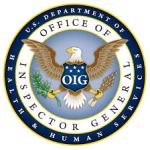 March 25, 2015 Advisory Opinion No. 15-04 addresses a proposed arrangement involving a clinical/anatomic lab’s desire to position itself as the single lab recommended by practices.
March 25, 2015 Advisory Opinion No. 15-04 addresses a proposed arrangement involving a clinical/anatomic lab’s desire to position itself as the single lab recommended by practices.
The proposal arises in the context of the OIG Advisory Opinion process, which allows the OIG to opine on its view of how the federal anti-kickback statute might view a proposed arrangement. Though Advisory Opinions are not “law,” they do provide good insight into prosecutorial intent.
Facts Presented
The clinical/anatomic lab (“Lab”) wanted to have agreements with physician practices to provide all their lab services. To deal with the fact that some commercial insurers have exclusive arrangements with labs, the Lab proposed that if a practice patient’s insurer required the patient to use another lab, the Lab would waive all fees for the affected practice patients and would not bill the patient, the medical practice or the patient. The Lab would provide its services to these “exclusive patients” for free, while billing all other patients (and/or their insurers, including governmental payers) its fee scheduled or contracted rates. The proposed arrangement would allegedly simplify things for the practices and keep lab results uniform. A practice patient would be required to use the Lab. The Lab’s services would simply be offered by the practices to their patients. The Lab stated that the provision of free services to certain practice patients would not provide any financial benefit to the practices, although the lab would provide the practice a limited-use interface. Samples would not be drawn in physician offices.
The OIG’s View
In the OIG’s view, a kickback issue exists because of the possible “kickback” involved in a provider giving something of value to a source of patient referrals (the practices) in exchange for possibly being the recipient of all lab referrals for the participating practices. This issue exists anytime A provides money (or something of value) to B and B provides patients or referrals to A.
The OIG underscored it’s view that providing free or discounted services to referral sources are suspect. Here is what the OIG found to be suspect remuneration:
- The convenience to the practice and consistency of results due to working with a single lab, plus
- Relief from the usual charges of IT vendors associated with the electronic medical record system that is part of the limited-use interface provided by the lab.
The OIG wanted to see that the lab proposal provides certain quality or safety improvements and also contains certain kickback related safeguards, but no (or insufficient) such evidence was provided.
The OIG voiced concern that about 70% of the lab’s physician practice clients had 10-40% of their patients in the pertinent plans. The OIG stated they would be extremely concerned if the practice discounted about half of its non-Medicare business. Given the percentages supplied by the requestor, the OIG’s concern was amplified. The OIG also did not seem to like the fact that the proposal would completely relieve affected patients from the obligation to pay anything at all.
Based on the above, the OIG stated that the proposal “poses too high of a risk of violating” the anti-kickback statute.
Conclusion
All medical services providers (including labs) that work with medical practices and medical practices themselves might be able to distinguish their arrangements from the 15-04 scenario, for instance by ensuring measurable quality or safety improvement or by involving reduced level of free services to commercial insureds, but must carefully analyze any arrangement that involves possible referrals from A to B and anything at all of value from B to A.
